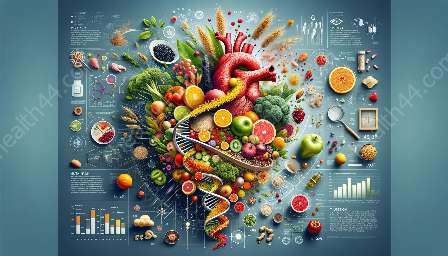Our food contains bioactive compounds that can offer various health benefits. These compounds can be utilized in the development of functional foods and nutraceuticals, which play a significant role in nutrition. Understanding the role of bioactive compounds in food and their potential applications in creating functional foods and nutraceuticals opens up a world of possibilities for enhancing human health.
Understanding Bioactive Compounds in Food
Bioactive compounds are naturally occurring chemicals in food that have a direct impact on human health. These compounds are not essential nutrients but show beneficial effects on the body when consumed in adequate amounts. Examples of bioactive compounds include polyphenols, carotenoids, flavonoids, and phytoestrogens, among others.
Role of Bioactive Compounds in Nutrition
Research has shown that bioactive compounds can contribute to the prevention and treatment of various diseases, including cancer, cardiovascular diseases, and neurodegenerative disorders. These compounds exhibit antioxidant, anti-inflammatory, and antimicrobial properties, which can help support overall health and well-being.
Applications of Bioactive Compounds in Functional Foods and Nutraceuticals
Functional foods are foods that offer additional health benefits beyond basic nutrition. Nutraceuticals are products derived from food sources that provide extra health benefits, including prevention and treatment of diseases. Bioactive compounds serve as the foundation for the development of these functional foods and nutraceuticals, as they possess the potential to promote health and reduce the risk of chronic diseases.
Utilizing Bioactive Compounds for Health Promotion
The use of bioactive compounds in functional foods and nutraceuticals allows for targeted health promotion strategies. By incorporating these compounds into food products, manufacturers can offer consumers convenient and enjoyable ways to improve their health. For example, adding plant sterols to margarine to lower cholesterol or fortifying cereals with vitamins and minerals to support specific health needs.
Enhancing Bioavailability and Bioefficacy
The challenge in utilizing bioactive compounds lies in ensuring their bioavailability and bioefficacy once consumed. Formulation and processing techniques play a crucial role in enhancing the absorption and utilization of these compounds in the body, thereby maximizing their health-promoting effects.
Regulatory Considerations
Creating functional foods and nutraceuticals using bioactive compounds involves navigating regulatory requirements. Government authorities regulate the labeling, safety, and health claims associated with these products to ensure consumers are informed and protected. Understanding these regulations is essential for the successful development and marketing of bioactive compound-based functional foods and nutraceuticals.
Innovations and Future Prospects
Advancements in food science and technology continue to drive innovation in the use of bioactive compounds for functional foods and nutraceuticals. Novel delivery systems, such as nanoencapsulation and edible coatings, are being explored to improve the stability and bioavailability of bioactive compounds. Additionally, personalized nutrition approaches are emerging, allowing for the customization of functional foods based on an individual's unique nutritional needs and health goals.
Conclusion
The convergence of bioactive compounds in food, nutrition, and health holds immense promise for the development of functional foods and nutraceuticals. By harnessing the potential of bioactive compounds and understanding their impact on human health, we can create innovative dietary solutions that contribute to disease prevention and overall well-being.


